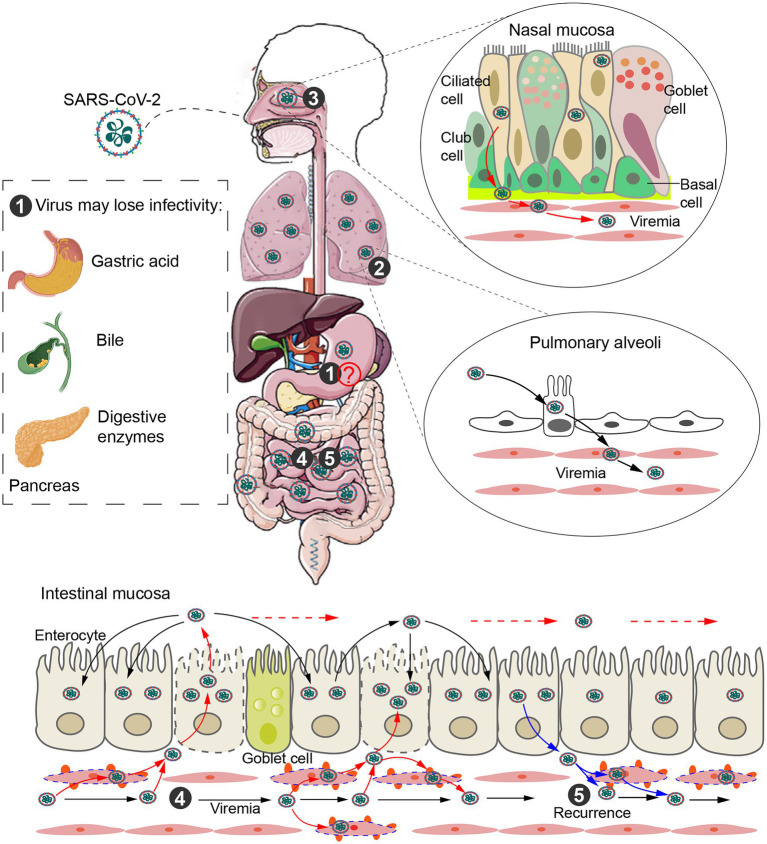Figure 1.
Intestinal infection and transmission routes. ① Direct evidence for fecal–oral transmission is still lacking. SARS-CoV-2 may be unable to enter the small intestine from the stomach due to gastric acid, bile and digestive enzymes. ② SARS-CoV-2 released from type II alveolar cells infects alveolar capillary endothelial cells (ECs). The virus replicates in ECs and is released into the blood to form viremia. ③ SARS-CoV-2 is released from infected ciliary cells of the nasal cavity and breaks through the basement membrane, infecting the vascular ECs and eventually entering circulation. ④ Blood transmission after alveolar or nasal infection is a potential route of intestinal infection. Eventually, SARS-CoV-2 is released into the gut and infects surrounding intestinal epithelial cells along the intestinal tract. ⑤ SARS-CoV-2 in the gut can also enter the capillaries and cause viremia, leading to recurrence of disease.

